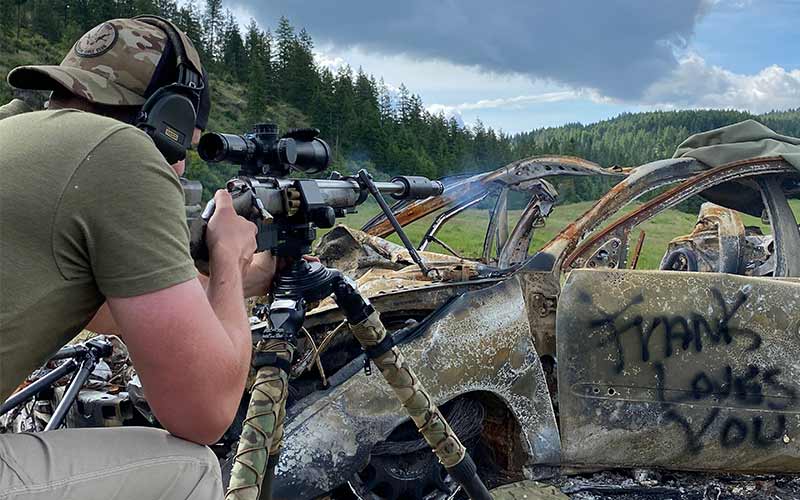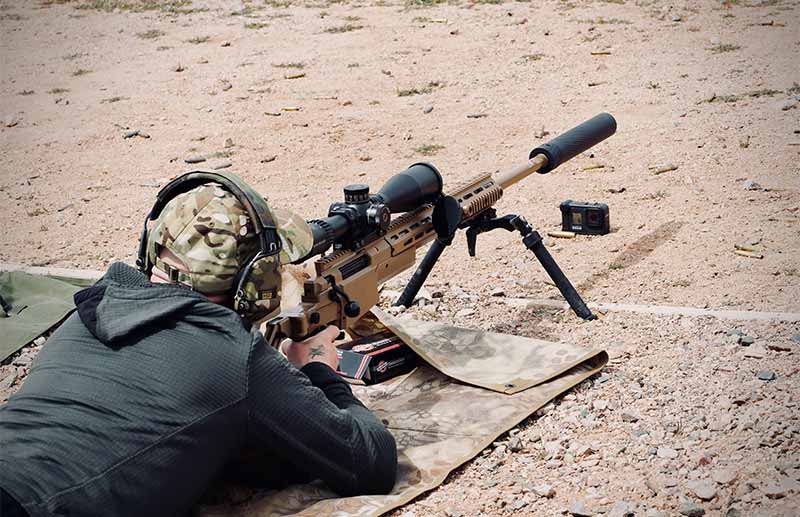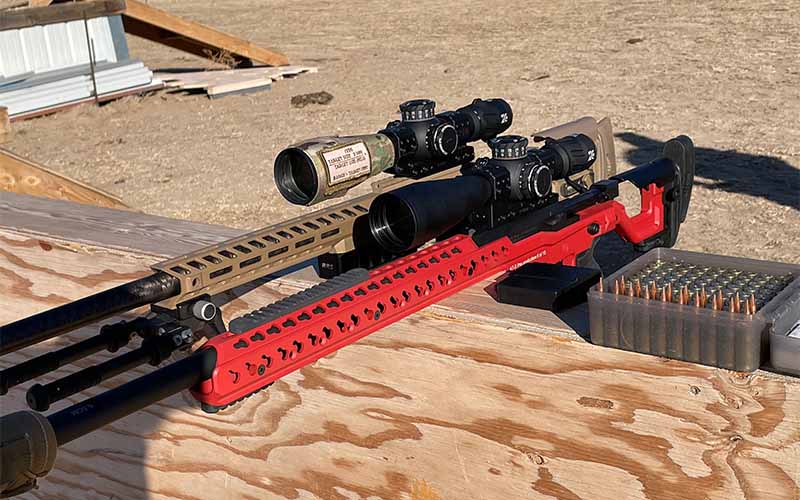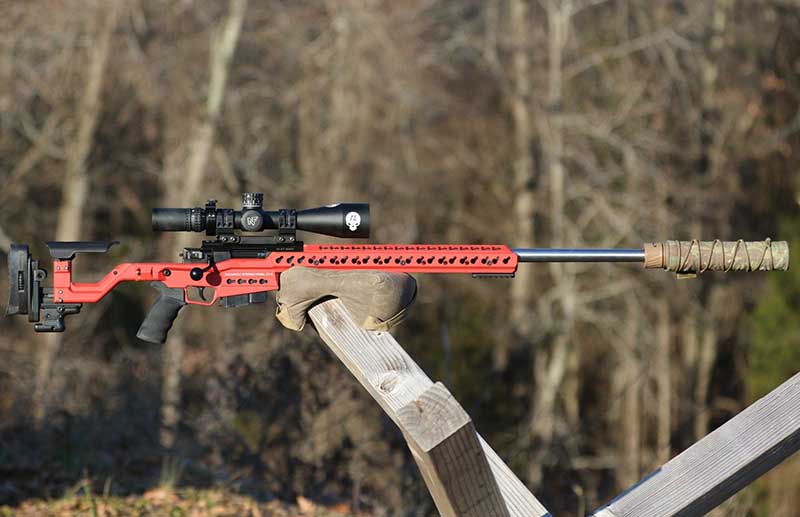It’s important to train practical precision in field conditions, something that you can’t get while benchrest shooting at the range.
There’s a movement afoot in the precision rifle world—a return to “the fighting rifleman,” for lack of a better term. The feeling around the water cooler is we’ve taken a turn away from the practical and more toward the engineering side. If this sounds familiar, it should; it’s called “benchrest shooting.”
When I arrived at Rifles Only in South Texas in 2002, it was the top spot for precision rifle training and competition. The focus mimicked the military in many ways and promoted finding your targets, determining the range and then engaging that target with a limited number of shots. Jacob Bynum, considered prone the rare shot, so the idea was to train people to adapt to the situation; the term alternate positions was born.
Rifles Only were full-time training military units during the high points of war years; from 2003 to 2011, I was three weeks on and one week off the entire time. Running and gunning was a way of life. We used what we learned from those classes to design stages for competitions, such as my Sniper’s Hide Cup and, back then, The Shooter’s Brawl. As tactical rifle competition got more popular, the needs changed. Now, we need to test a shooter’s skill but, at the same time, accommodate more shooters into the mix. That meant watering down the stages.
Since those early days, we’ve seen the growth of Series and Leagues. They’re very popular and have taken the idea from four or five matches a year—to over 50. Just about every weekend there’s an event somewhere in the country. That’s a great thing; competition is the cheapest form of organized training anyone can participate in.
With popularity, however, comes more watering down of the stages, to the point where competitors no longer “run and gun,” but instead take three steps to a prop and lay a rifle down on a sandbag, which we describe as barricade benchrest, using 20-plus-pound 6mm rifles that use extremely light triggers and flat-bottom stocks.
They’re incredibly accurate, and shooting this method can be a ton of fun for many people. But the goal of these setups is to remove as much of the shooter from the equation as possible.
Weight equals stability, and stability is accuracy. Balancing these truths isn’t always as easy as it sounds. So, instead, we get rifles designed to balance on the bags without influence.
Before someone goes, here it is: Please don’t get me wrong, the innovations around the current level of competition have done a ton of good for the sport. The bag’s design, new tripods, mounting options and accessories are all positives. My question is one of balance. How do we balance the practical with the engineering side of things?

Shifting Tides
Well, that’s happening; there’s a growing movement to return to field-style events. We recognize the community is asking for more, so a core group of new competitors is engaging with whom they consider the old guard. They want to return to the roots: a practical application tied to the competitive nature of man.
I like to keep things simple: Find it, range it, engage it, WTF, wind, target, fundamentals. Stuff like this is easy to remember.
Match booklets identify the ranges; the targets are marked and painted, and—usually—the competition has mapped out their path before even seeing the stage. We removed target detection to move the shooters through the stages more efficiently.

Today, if you ask me, they’re studying for a specific test rather than the situation. If you change any one question on the test, you’re met with protests. The return to practical has to include a return to the essential elements of our shooting life: hunting.
With this return to the fighting riflemen, Hunter Series are cropping up, limiting the events to hunting-style rifles with reduced weights. Being able to find the targets is pretty crucial in a hunting type of situation. Then, you have to build that position based on the terrain. This is where the adaption elements of competition work to your advantage. Even the experimentation with bag fills helped in this context; rather than carry a 6-pound Game Changer bag, you can use the Go Lite fill and reduce the weight by a significant amount. The sheep guys will carry it.
Where Does It All Land?
We recognize two things can exist simultaneously: series style of events and field events. Nobody is suggesting we change entirely every aspect of the current styles. Many want a balance of the two, a combination of skills to be tested.

An example of this is Accuracy International rifles. Despite being known for their sniper rifles, used by more than 160 countries, they started a competition team. Those team members used the existing barreled action to design a rifle better suited to the tools employed today by a novel means.
They lowered the rifle’s center of gravity in the stock by close to a ½-inch over a typical competition rifle. It can still take advantage of all the weight systems used and accessories we see today, but in a 12-pound base system. They created a balance between the military world and competition.
Balance Is The Key To All
The mindset moving forward? I see the 3-Gun style of AR competition as the Assaulter in the military. To me, the precision rifle should mimic my sniper experience in the Marines—methodical and deliberate … all those words we recognize around the skillset.
It’s a journey, not a road trip.
Editor’s Note: This article originally appeared in the June 2021 issue of Gun Digest the Magazine.
More On Improving Practical Precision:
 NEXT STEP: Download Your Free Storm Tactical Printable Target Pack
NEXT STEP: Download Your Free Storm Tactical Printable Target Pack
62 Printable MOA Targets with DOT Drills – Rifle Range in YARDS This impressive target pack from our friends at Storm Tactical contains 62 printable targets for rifle and handgun range use. Target grids and bullseye sizes are in MOA. Ideal for long-range shooting! Get Free Targets

